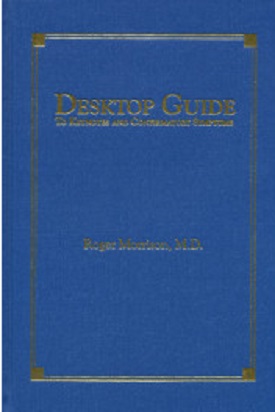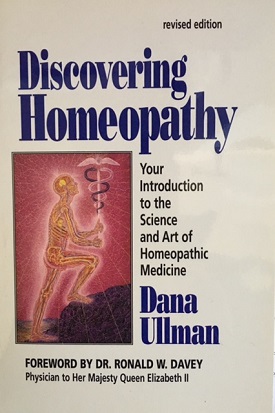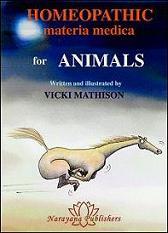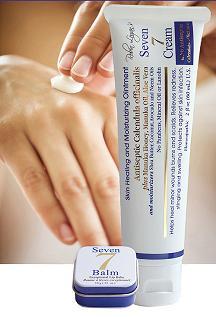Roger Morrison, MD, DHt
Desktop Guide to Keynotes and Confirmatory Symptoms by ROGER MORRISON MD, DHt [#MORDES]
$68.00
Description
The “companion” book to this book is Dr. Roger Morrison’s Desktop Companion to Phyisical Pathology. This latter book describes in detail how homeopaths treat 50 of the most common acute and chronic ailments. He highlights a handful of the leading homeopathic medicines to consider, along with the indications for usage of each remedy, and then, he provides a list of 10-20 other homeopathic medicines to consider and their leading indications. These two books used together provide great practical benefits for the effective usage of homeopathic medicines.
Reviewed by Durr Elmore, ND, DHANP
Roger Morrison’s Desktop Guide to Keynotes and Confirmatory Symptoms is a significant and welcome addition to the homeopathic literature. As stated by doctors Bill Gray and Jonathan Shore in their Foreword, “This book should be a mandatory addition to the library of every homeopath, occupying a place on the desk next to the repertory.” This is a strong statement, but after reviewing Desktop Guide I concur wholeheartedly.
Dr. Morrison has written a practical, very “user-friendly” book giving a clear and concise description of the remedies, followed by a list of keynotes and confirmatory symptoms. This book is exactly as titled,-a desktop guide, a source of ready information designed to be within arm’s reach both during the interview and when studying the case. This text is an abbreviated modem materia medica, featuring an easy-to-read list of keynotes and confirmatory symptoms of two hundred ninety remedies. With it you can scan the important symptoms of remedies, refresh your memory and derive valuable confirmatory questions.
Dr. Morrison writes in his Introduction, “The purpose of this book is to serve as a concise guide to the main keynotes and confirmatory symptoms of each of the most commonly prescribed remedies in clinical practice. I have entitled it Desktop Guide because I envision its place sitting bandy to the interviewer to refer to during the course of case-taking. Many, many times in my practice I have reached for just such a book as this and could not find it. I reach for this book every time I wish to confirm a remedy in a case and want to ask the specific symptoms of confirmation. While there are several excellent texts of keynotes, I found none which truly compile all the most important keynotes existing. I hope that this book will fill this void.
“This text is a compilation of the most essential facts of our remedies, based upon my knowledge but most especially upon the copious notes of my studies with George Vithoulkas. Mr. Vithoulkas is now presenting us with his magnificent materia medica, and yet I believe this simple list of keynotes and confirmatory symptoms will remain a useful tool in the homeopathic armamentarium. I have not attempted to include every symptom known for our remedies-this is the province of our great encyclopedias. Nor is this a proper materia medica for I have given only a sketch of the full essences of the remedies. Rather it is meant as a text of the basic and practical information which is the ‘bread and potatoes’ of homeopathic practice.”
In accomplishing this task, Roger Morrison has done a superb job. The remedy descriptions begin with a summary of the essence which ranges from a few sentences on the small remedies to several pages on the polycrests. Both novice and veteran homeopaths will find his essence descriptions clear and readily understandable. His writing style is unpretentious, practical, straightforward, clear and descriptive, allowing the reader to grasp rapidly the essence of the remedy in question.
Following the essence description is a list of keynote symptoms arranged by heading, beginning with Mind. Roger Morrison places Generals next, due to their importance, and this is followed, in Hahnemann’s traditional order, by Head, Nose, GI, etc.
Following the lists of keynotes is a section entitled “Clinical.” Listed here are the most common conditions to be treated by the remedy, with the warning that “pathological entities are our least specific information in the selection of the simillimum.”
Next Dr. Morrison has included a section entitled “Combined Symptoms”, indicating “common doublets or triplets of symptomatology which can be considered strong indications for the remedy, even when the remedy is not famous for either of the component symptoms. For example, Cobaltum is not a major remedy for lumbago, nor is it among the most important remedies for seminal discharges. However when seminal discharges and lumbago are found in the same case, then Cobaltum becomes a very likely choice for the patient.” These doublets are only appropriate for certain remedies. This is a a new and important addition to aid in case analysis, enabling us better to select remedies in light of these combinations. These doublets and triplets are a most useful contribution to our materia medica.
Next is a section on “Comparisons,” regarding the similarities between remedies. These remedies, in Dr. Morrison’s experience, are the most common ones to be confused with the remedy under discussion. This section is also extremely helpful both in differentiating between remedies and in furthering our knowledge of comparative materia medica.
Symptoms are presented in two gradations, plain type and bold. Those in bold print are true keynotes, defined as “A symptom so indicative of a particular remedy that upon hearing this symptom strongly stated by the patient, our minds must turn automatically to this remedy.”
Dr. Morrison goes on to offer excellent advice regarding case analysis: “We must attempt in all cases to justify our prescriptions in the broadest sense possible, and should never prescribe narrowly on only one symptom. However, the keynote is a strong piece of information and is often crucial in making the final determination of the remedy.
“The keynotes listed may also be used in further justifying our prescription. When we first examine a case, we must keep our minds free of prejudice regarding remedies.” He continues by offering us a very practical method of using the book: “However, after the symptoms are well-delineated, it is often helpful to try to confirm the remedies which are suggested by our study of the case by asking the patient about the main keynote symptoms for these remedies. In this text, the prescriber can readily find the keynotes used to confirm the prescription by scanning down the page asking the patient questions concerning the symptoms listed in bold type.”
Dr. Morrison has added a diamond bullet preceding symptoms that indicate that the remedy discussed is the most important remedy in the materia medica for the symptom noted. I find that thus delineating select symptoms as ‘super-keynotes’ is extremely useful.
Dr. Morrison writes that most of the symptoms in the text come from his studies with George Vithoulkas, and other symptoms are from reliable sources such as Nash or Lippe. He has not listed symptoms simply because they are in other texts. “Rather I have included almost exclusively symptoms which I have confirmed in my own cases or cases that I have had an opportunity to examine. Also I have not included remedies of which I have only very limited experience or only theoretical knowledge. Therefore, this text is necessarily incomplete (no prescriber can claim to have seen all possible presentations of our remedies) and I welcome each prescriber to make his own additions in the margins. Despite this caveat, I have invested some seven years in preparing this text and to the best of my ability, all of the best-documented keynotes and characteristics are included. I look forward to all comments and additions from my readers.”
Traditionally a reviewer must point out shortcomings of the book under consideration. My only wish is that this book would have been available several years ago, because it would have saved countless hours of study and mistakes. Desktop Guide is a godsend that makes practicing homeopathy much easier because, at last, we have a practical materia medica that is readily accessible and very easy to read and to study. The book is well bound, with a sturdy hard cover (without dust cover). The paper, print, and layout appear to be of top quality.
Desktop Guide is a monumental book, a book that every homeopath will benefit from owning and using. As doctors Jonathan Shore and Bill Gray write in the foreword:
“The perpetual challenge of all students of homeopathy, whether beginner or experienced, is the overwhelming volume of detailed symptoms in our Materia Medicas. We constantly strive to simplify the information, to sort out the clinically useful from the non distinguishing and general symptoms, to grasp in a single picture the essential features of the remedy. Compounding this difficulty is the fact that most of our sources belong to another era in time; the rapid changes and unique pressures of modem society have brought forth new facets of our remedies, and even well-known symptoms are expressed in a modem idiom which obscures their relationship to the material in older texts.
“This task of separating the truly essential from the commonplace, and adapting the form to present day expression, has been approached by Roger Morrison with characteristic dedication. Building on his innate scholarly mastery of the classical literature sources and his advanced training in Greece with George Vithoulkas, he has passed what he has been given through the filter of his own extensive clinical experience. This work, seven years in preparation, has resulted not only in a remarkable blending of the old and the new, but has come truly close to achieving the perfect balance between too much and too little. The information is reliable and clearly presented in such a form as may be easily accessed in the midst of the demands of everyday practice. Yet the true depth and precision of this text only reveals itself after careful study and reflection in the quiet of one’s own home.
“This book should be a mandatory addition to the library of every homeopath, occupying a place on the desk next to the repertory.”






Reviews
There are no reviews yet.